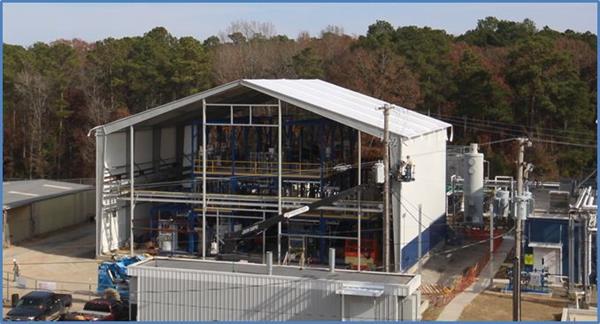
Lithium advances for two in US
Submitted by:
Andrew Warmington
Standard Lithium has completed the installation of its industrial-scale, pre-commercial direct lithium extraction demonstration plant at Lanxess’s South Plant facility in southern Arkansas, as well as site office and control room, a lithium-specific analytical laboratory and a steel-framed, all-weather structure (pictured) that allows year-round operation.
Once final connections are completed, the commissioning phase will begin. The plant will extract the equivalent of 100-150 tonnes/year of lithium carbonate directly from unconcentrated, raw waste brine, which is itself a by-product of Lanxess’s bromine facilities, using Standard Lithium’s LiSTR technology A recently completed a preliminary economic assessment envisages producing 20,900 tonnes/year of battery-quality lithium carbonate, potentially increasing US production six-fold.
CEO Robert Mintak said that the firm is “one of the most advanced lithium projects in North America”. Standard Lithium is also pursuing the resource development of over 12,000 hectares of separate brine leases in south-western Arkansas and approximately 11,250 hectares of mineral leases located in the Mojave Desert in San Bernardino county, California.
Meanwhile, Piedmont Lithium has received a Clean Water Act Section 404 standard individual permit from the US Army Corps of Engineers for its proposed lithium mine and concentrator in North Carolina, 11 months after applying. This is the only federal permit needed and follows a state Section 401 individual water quality certification.
The company said that it will now accelerate development activities for its integrated lithium chemical business. It expects to complete a preliminary feasibility study for its lithium hydroxide plant in Q2 2020 and a definitive feasibility study for its integrated project by the end of 2020. This is the only spodumene-to-hydroxide project in the US.
